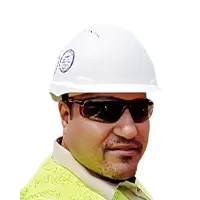Edoxi offers a 35-hour AVEVA E3D course designed for engineers and design professionals worldwide. The course is ideal for those working in Oil & Gas, Power Plants, Chemical, Water Treatment, and Renewable Energy sectors.
AVEVA E3D (Everything 3D) is a powerful plant design software used globally. It is widely adopted in large-scale industrial and infrastructure projects. This training gives you practical skills in 3D plant design, layout, and modeling, highly valued in today’s competitive job market.
You will gain hands-on experience through a real-world Stabilizer Unit project. You’ll learn to design core process units such as Sulphur Recovery Units (SRU), Amine Recovery Units (ARU), and Tail Gas Treatment Units (TGTU). The course also covers the design of wellhead platforms, production facilities, and midstream infrastructure.
The AVEVA E3D curriculum includes:
This course prepares you for roles in EPC companies, design consultancies, and project execution teams. After certification, you can pursue careers as a 3D Modeler, Piping Designer, Plant Layout Engineer, or Project Engineer,in both onshore and offshore environments.
As global demand for advanced energy infrastructure rises, skilled AVEVA E3D professionals are in high demand. This course helps you build job-ready skills and boost your global career prospects.
Edoxi’s AVEVA E3D training is led by industry experts and includes practical labs, project-based learning, and recognized certification. Whether you're upskilling or switching fields, this program sets you on the path to success in the world of 3D engineering design.
Join Edoxi today and take the next step in your engineering career.
Get practical experience using AVEVA E3D Design software, focusing on essential tools and techniques for effective plant design.
Immerse yourself in a fully integrated plant design environment. You'll master workflows for piping, structural, and equipment modelling.
Acquire the skills to create industry-standard drawings and reports, and produce accurate plant documentation and isometrics.
Choose the training format that fits your needs—classroom or online. Enjoy customizable group sizes for a more tailored learning experience.
Learn from experienced professionals in plant design who share valuable insights from real-world industry projects.
Access a wealth of PDF study materials, with detailed guides for each module
Recent graduates in mechanical, civil, or electrical engineering seeking to begin their careers in plant design.
Those looking to enhance their skill set with industrial plant modeling expertise.
Professionals aiming to shift into design engineering roles.
Individuals ready to move from 2D CAD systems to 3D plant design.
Engineers seeking to specialize in plant design.
Anyone with basic technical knowledge interested in starting a career in plant design.
The AVEVA E3D Course offers practical, hands-on training where learners engage directly with the software. Each module incorporates practical exercises that enhance understanding by applying theoretical concepts in real scenarios.
In this project, you’ll learn to use AVEVA E3D tools to design a complete stabilizer unit, integrating your skills in equipment, structural, and piping design.
Create models of industrial equipment using basic shapes, focusing on columns and process vessels.
Design industrial structures, including stairs and ladders, and practice modelling both linear and planar members.
Develop pipe routing and configure components while generating precise isometric drawings.
Edoxi’s AVEVA E3D User Level training opens exciting paths in plant design and engineering, with progression from entry-level to senior design roles.

Get expert assistance in getting your AVEVA 3D Course customised!
Here’s a four-step guide to becoming a certified AVEVA E3D professional.
Join Edoxi’s AVEVA 3D Course
Many leading organisations worldwide trust Edoxi for Professional Training. You may choose Edoxi for AVEVA E3D Training for the following reasons.
Our instructor brings 18 years of expertise in plant design and has successfully guided over 500 engineering professionals.
Students gain practical experience by working on real stabilizer unit projects, utilizing the AVEVA E3D software throughout the course.
We offer adaptable training solutions for corporate teams, allowing companies to select between in-person classes or online sessions to suit their needs.
The curriculum encompasses all facets of plant design, including piping, structural, and equipment design, with a strong emphasis on interdisciplinary teamwork.
Our program is designed to facilitate advancement into senior design roles, equipping graduates for growth within leading engineering firms.

Our mentors are leaders and experts in their fields. They can challenge and guide you on your road to success!

Gaurav Mittal
Gaurav Mittal is an accomplished professional with extensive expertise in AVEVA E3D, boasting over 10 years of training experience and a solid foundation in the industrial applications of SP3D. Throughout his career, he has effectively mentored more than 500 individuals, helping them master SP3D and plant design through a practical, hands-on teaching approach that equips participants with critical real-world skills to tackle various engineering challenges.
With 18 years of detailed engineering experience in the oil and gas sector, Gaurav specializes in plant design and has worked on complex projects involving downstream processing, offshore platforms, and power plants. His profound technical knowledge is backed by an MBA in International Business and a Mechanical Engineering degree.
As a certified AVEVA E3D User, Gaurav offers invaluable cross-platform insights, ensuring his training sessions are both informative and directly relevant to industry standards.
Here is the list of other major locations where Edoxi offers AVEVA E3D Course
Graduates may qualify for positions such as Junior Piping Designer, Junior Structural Designer, or Engineering Trainee, with opportunities to advance to senior design roles.